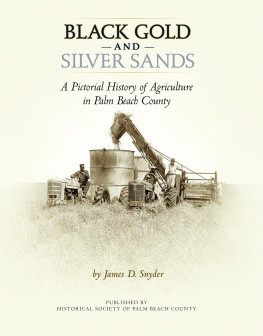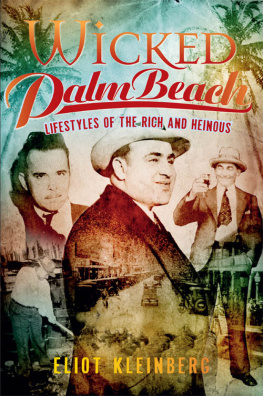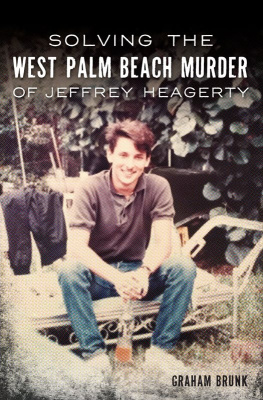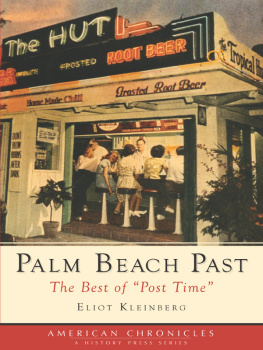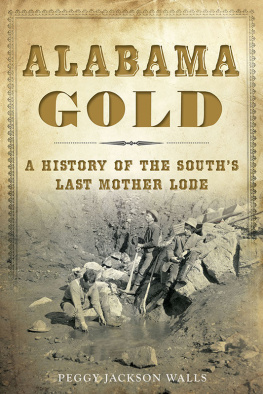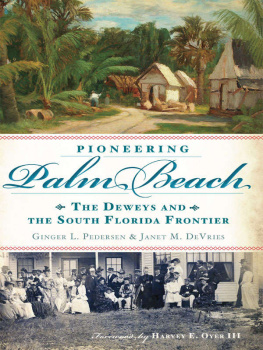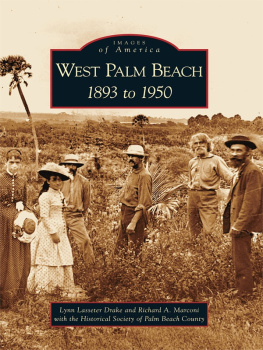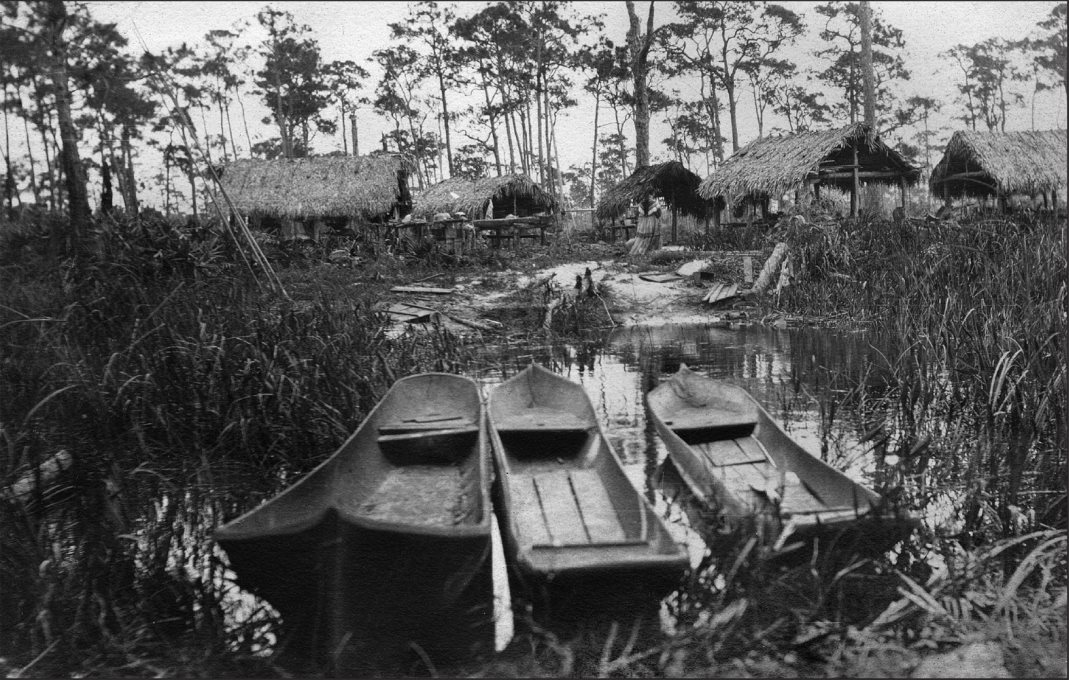
Another view of the Seminole camp is on pages 10-11. (Historical Society of Palm Beach County)
BLACK GOLD
AND
SILVER SANDS
A Pictorial History of Agriculture
in Palm Beach County
by James D. Snyder
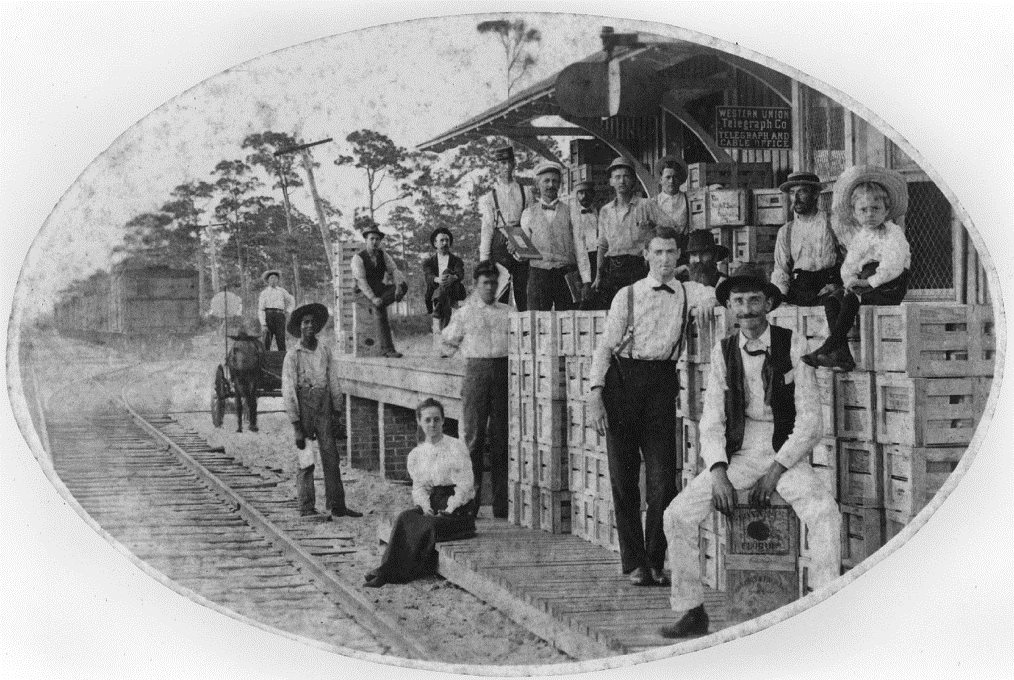
CONTENTS
.

Just 25 miles west of the Florida Turnpike, a crop sprayer plies its way across a seemingly endless carpet of row crops. A century ago it was a thicket of impenetrable sawgrass. (Historical Society of Palm Beach County)
PRELUDE
Muck, Mire and Magnificence
M arion Geer tried to put in prose just what made her parents seek their elusive Garden of Eden somewhere in Florida.
Our home had been on an Illinois farm. And when one has experienced the sort of weather that this and other northern states are capable of;
When the mercury has taken up winter quarters at the bottom of the tube;
When the windows are so coated with frost that looking out is impossible for days;
When the winds come sweeping over the prairie, gathering force with every mile, shaking doors and windows, shrieking and howling around corners as though a host of demons had been let loose;
When the blinding snow storms come, blocking roads, burying fences out of sight; And when at last spring comes with its interminable mud, deep, black and sticky, the climax has been reached and the desire for a change to a more genial locality cannot be wondered at.
The year was 1875, and little Marion might have been writing on behalf of the millions of migrants who would follow her family to Florida. In December, three Illinois farm families with 13 members packed all their belongings and took a grueling 78-hour, 1,300-mile train ride to Jacksonville. There theyd rent a house while the men folk headed south on a scouting trip to find the fairest farmland in Florida.
But already the contrast was breathtaking, even in the states northernmost city. It took us a long time to realize that we neednt bundle up nor shiver when we went out of doors, wrote Marion in 1896, then a woman looking back on her girlhood. Nor to realize that it was no longer necessary to put our vegetables to bed to keep them from freezing, nor thaw out bread, meat and milk each morning before the family breakfast could be served.
After months of wandering, recorded Marion, they returned [in the summer of 1876] declaring with one accord that at Lake Worth, 300 miles south of our temporary home, they had found the Garden of Eden, where the sky was bluer, the water clearer, the flowers sweeter and the song of birds more musical than could be found elsewhere on the continent.
More later on what actually awaited them.
The legacy left by those first farmers after a mere two or three generations is an awesome sight today. You cant really grasp it all from the ground. Most of us dont know Palm Beach County much beyond our gated communities, golf clubs and nearest shopping centers. For some, our most expansive horizon is that strip of asphalt, lawns, streets and parking lots east of the Florida Turnpike. Within that stretch of land a thousand family farms have already been paved over or planted with homes and truckedin trees.
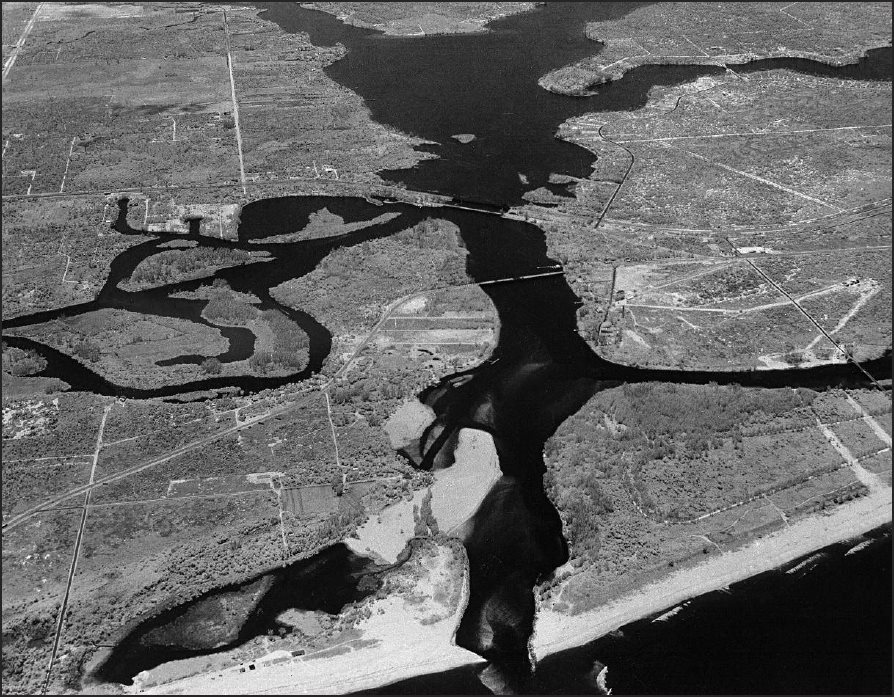
To the northeast of Lake Okeechobee lies a separate ecological system, the 400- square-mile Loxahatchee River Basin. The marshy sloughs surrounding the Loxahatchee also feed the St. Lucie River and Indian River estuary. (Historical Society of Palm Beach County)
But theres still much, much more to see in this vast county. Lets go to Boca Ratons small airport and board a helicopter. Were about to survey in one quick loop a county that, at 2,578 square miles, is twice the size of Rhode Island and more than half as large as Connecticut.
As we lift off, heading north, we see more familiar sites on the right: Atlantic Avenue, Boynton Beach Boulevard linked to I- 95 then the 23-mile-long Lake Worth Lagoon, spangled with bright flecks and surrounded with homes and Caribbean blue pools. Only a few preserves of flatwoods and scrubland dot the landscape remnants rescued in an Atlantic Ridge where cattle once roamed and pineapples grew.
Now look down to the left where the turnpike stretches. Its still a land in transition. Here, a golf course lined with Addison Mizneresque McMansions with zero lot lines. There, a forty-acre tomato patch, a ten-acre nursery, an equestrian center, an unkempt tract full of scruffy native trees all perhaps awaiting that visit from a developer with his cashiers check to the Promised Land.
Beyond Northlake and PGA Boulevards looms the upper Loxahatchee Slough, part of the soggy 400-square-mile watershed that feeds the Loxahatchee River with its hundreds of rivulets and many canals. Beyond it a tea-colored ribbon, the river itself, its upper reaches girded by the 11,000-acre Jonathan Dickinson State Park. Every day the Loxahatchee loses a bit more in volume as it competes with new golf courses and housing developments, their pipes sucking into the aquifer below like so many straws in a milk shake.
Now we swerve left and west. Past the vast Pal-Mar and J. W. Corbett sanctuaries all part of the separate eastern ecosystem. We see the eastern rim of Lake Okeechobee and the green hump of the Herbert Hoover Dike that girds most of it. Were soon in the ecological orbit of the nations second largest body of freshwater, a 468,680-acre saucer that is divided like a pie by five counties.
As we begin a swing to the southwest, we see what 90 percent of the countys population never visits: a vast green, nearly level landscape that stretches even beyond a helicopters horizon. Were now fluttering over part of the 707,000-acre Everglades Agricultural Area, an endless array of green and black rectangles of sugar cane, sweet corn, lettuce, celery and other crops. Thousands of miles of man-made ditches crisscross the landscape, most of them draining eventually into the West Palm Beach, Hillsboro and North New River Canals. Crossing the canals are two rail lines for hauling crops to market. Moving down the roads below like soldier ants are large trucks bringing sugar cane to mills whose stacks billow white steam around the clock from October through May. Other trucks make their way to supermarket distribution centers with branded vegetables, shucked, sliced, diced and packaged conveniently for families on the run.
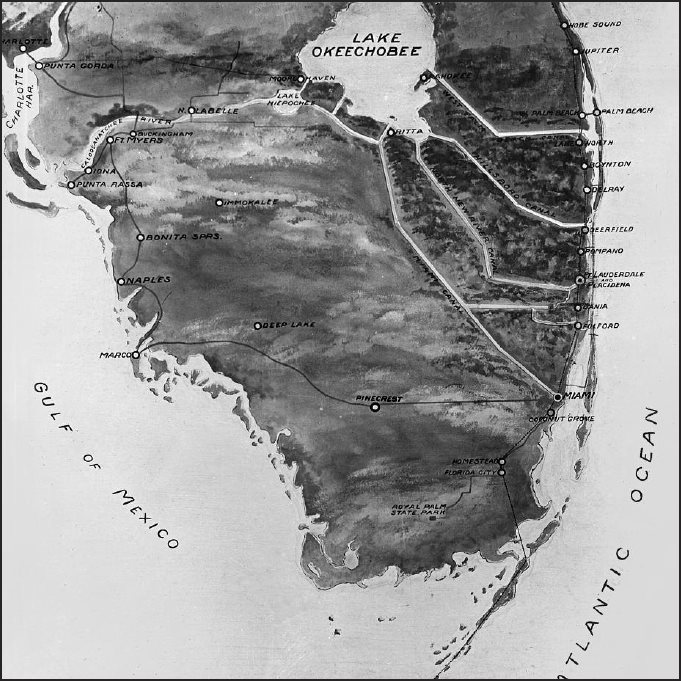
This map was drawn in 1924 to show the five major canals that had been dug to drain and tame unruly Lake Okeechobee. (Florida State Archives)
Were now approaching Belle Glade, strictly a farm workers town, the largest in the Everglades, sprawled smack dab in the black soil that gives it the nickname, Muck City. A popular restaurant is the Black Gold Steak House and the biggest event is the annual Muck Bowl between Glades Central and Pahokee high schools. Welcome to Belle Glade. Her Soil Is Her Fortune, read the highway signs on the edge of town.

